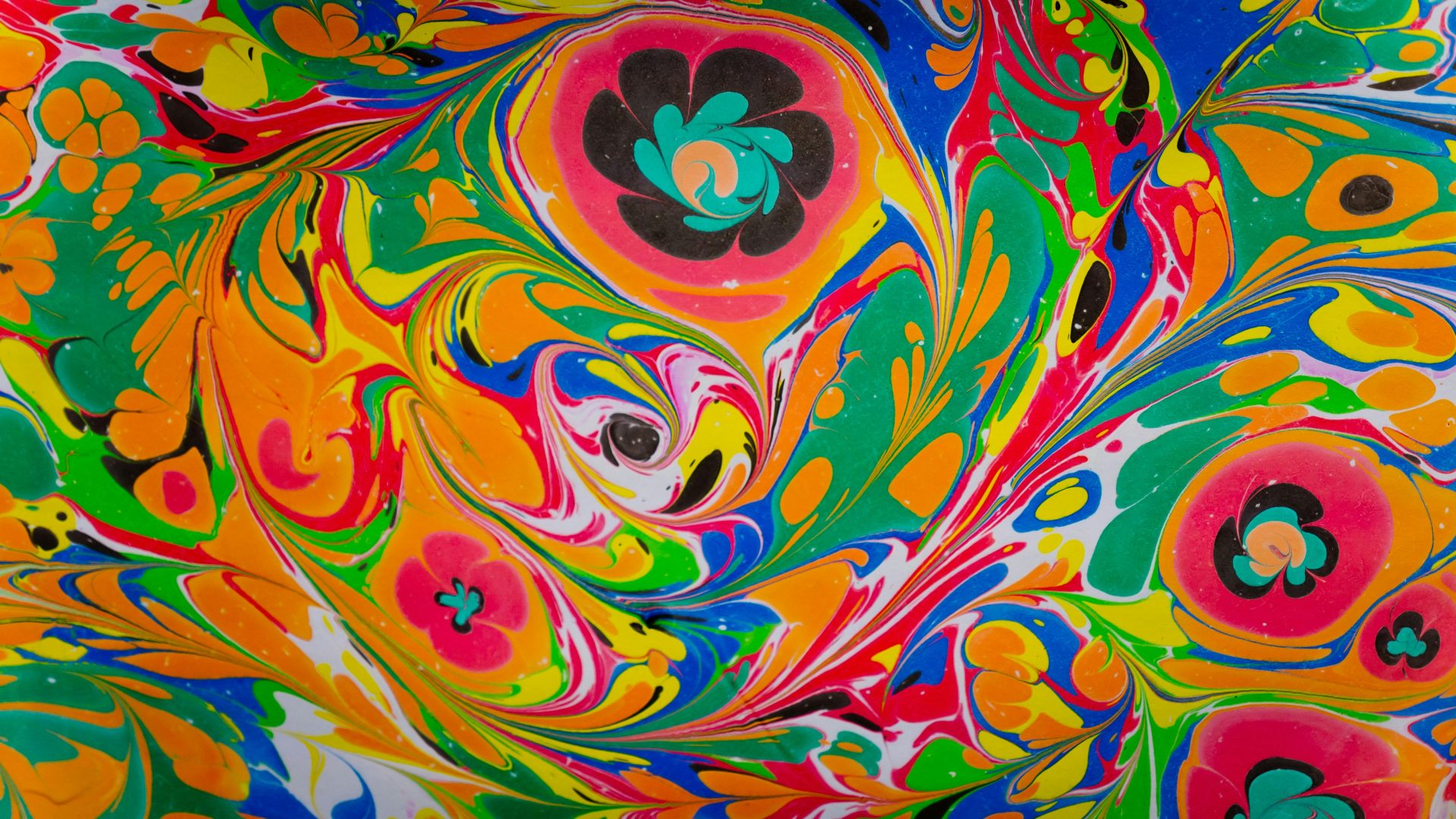Angkor Wat Sunrise Tour: Ancient Temples of Cambodia

Before diving in, please note: This post is for informational purposes only. If you’d like to know more about how we approach topics, feel free to check out our friendly Disclaimer Page.
Hey there, amazing readers! 🖐️ Just a quick note: yes, we know there are a lot of ads here. Trust us, we get it—it’s not the prettiest look, but they help us keep this blog alive and kicking. Those pesky little ads cover the costs of all the behind-the-scenes magic, from hosting and tech stuff to creating content we hope you’ll love.
We’re committed to delivering quality posts, and your support (even just sticking around despite the ads) means everything to us. So, bear with us, and thanks for helping us keep the good vibes rolling. Now, on to the fun stuff! 😉
TRANSLATE BUTTON AT THE END OF THE ARTICLE
Exploring Angkor Wat: A Guide to Cambodia’s Ancient Temples
Cambodia’s Angkor Wat is a UNESCO World Heritage site and one of the most iconic landmarks in Southeast Asia.
The sprawling temple complex covers over 400 acres and includes numerous temples, reservoirs, and intricate carvings that showcase the rich history and culture of the Khmer Empire.
Exploring Angkor Wat is like stepping back in time to a world of ancient mystery and grandeur.
The main temple, Angkor Wat, is the largest religious monument in the world and is a must-see for any visitor to Cambodia.
The temple was built in the 12th century by King Suryavarman II and is dedicated to the Hindu god Vishnu.
Its towering spires, intricate bas-reliefs, and stunning architecture make it a sight to behold.
In addition to Angkor Wat, there are several other temples within the complex that are worth exploring.
The Bayon Temple, with its famous smiling faces, is a favorite among visitors, while the Ta Prohm Temple, with its massive trees growing out of the ruins, is a hauntingly beautiful sight.
Exploring these temples allows visitors to immerse themselves in the history and spirituality of this ancient civilization.
When exploring Angkor Wat, it’s important to respect the site’s cultural and historical significance.
This means following the rules and regulations set forth by the authorities, such as staying on designated paths, not touching the carvings, and dressing appropriately.
By respecting the site, visitors can help preserve it for future generations to enjoy.
Planning Your Sunrise Tour of Angkor Wat
A sunrise tour of Angkor Wat is a popular way to experience the beauty and tranquility of the temples.
Watching the sunrise over the ancient ruins is a magical experience that is not to be missed.
However, planning a sunrise tour requires some careful preparation to ensure a smooth and enjoyable experience.
First and foremost, it’s essential to arrive at the site early to secure a good spot for viewing the sunrise.
The main entrance to Angkor Wat opens at 5:00 am, so it’s recommended to arrive at least 30 minutes before that to ensure you have enough time to find a good vantage point.
Additionally, purchasing your entrance ticket the day before can save you time and hassle in the morning.
Another important consideration when planning your sunrise tour is transportation.
Hiring a tuk-tuk or taxi to take you to the site is a convenient option, but be sure to negotiate the price beforehand.
Alternatively, renting a bicycle can provide a more immersive and eco-friendly way to get to the temples.
It’s also wise to pack some essentials for your sunrise tour, such as a flashlight, water bottle, and snacks.
The early morning hours can be chilly, so wearing layers is a good idea.
Don’t forget your camera or smartphone to capture the stunning sunrise and temples in all their glory.
The History and Significance of Angkor Wat
Angkor Wat holds a significant place in Cambodian history and culture.
Built in the 12th century by King Suryavarman II, the temple was originally dedicated to the Hindu god Vishnu but later transformed into a Buddhist temple.
The intricate carvings and bas-reliefs throughout the complex depict scenes from Hindu mythology and the Khmer empire’s history.
The temple’s architecture is a testament to the ingenuity and craftsmanship of the Khmer people.
The central tower of Angkor Wat represents Mount Meru, the center of the universe in Hindu mythology, while the outer walls are adorned with intricate carvings of celestial beings and epic battles.
Over the centuries, Angkor Wat has played a pivotal role in Cambodian society, serving as a place of worship, pilgrimage, and cultural heritage.
Despite periods of neglect and conflict, the temple has stood the test of time and remains a symbol of Cambodia’s resilience and spiritual heritage.
Discover "The Traveler’s Guide: Your Ultimate Companion for Every Adventure ✈️"
Visiting Angkor Wat offers visitors a glimpse into the grandeur and sophistication of the Khmer empire and allows them to connect with the spiritual and cultural traditions of Cambodia.
By learning about the history and significance of Angkor Wat, visitors can gain a deeper appreciation for this remarkable site.
Navigating the Crowds at Angkor Wat
One of the challenges of visiting Angkor Wat is navigating the crowds, especially during peak tourist seasons.
The temple complex attracts millions of visitors each year, making it a popular but sometimes crowded destination.
To make the most of your visit and avoid the crowds, it’s essential to plan ahead and strategize your time at the site.
One way to beat the crowds at Angkor Wat is to visit during the off-peak hours.
Early morning and late afternoon tend to be less crowded, allowing you to explore the temples in relative peace.
Alternatively, visiting some of the lesser-known temples within the complex can provide a more serene experience away from the crowds.
Another tip for navigating the crowds at Angkor Wat is to explore the site in a counter-clockwise direction.
This can help you avoid the bulk of the crowds who tend to move in a clockwise direction, especially around the central temple.
By taking a different route, you can enjoy a more leisurely and less congested experience.
It’s also important to be patient and flexible when navigating the crowds at Angkor Wat.
Lines for popular vantage points or photo opportunities can be long, so it’s best to approach these areas with a calm and respectful attitude.
Remember that everyone is there to enjoy the beauty of the temples, so a little patience can go a long way.
Best Photo Spots at Angkor Wat for Sunrise
Capturing the perfect sunrise shot at Angkor Wat requires finding the best vantage points and timing your shots just right.
With its stunning architecture and serene setting, Angkor Wat offers plenty of opportunities for striking sunrise photos.
Here are some of the best photo spots to consider for your sunrise tour:
Reflection Pond: The pond in front of Angkor Wat is a popular spot for capturing the temple’s reflection in the water during sunrise.
The calm waters and colorful sky create a picture-perfect scene that is sure to impress.
West Gate: The west gate of Angkor Wat offers a unique perspective of the temple against the backdrop of the rising sun.
The intricate carvings and stone statues make for a dramatic and visually striking photo opportunity.
Central Causeway: Walking along the central causeway leading to Angkor Wat can provide stunning views of the temple illuminated by the soft morning light.
The long, straight path creates a sense of depth and perspective in your photos.
Upper Terrace: Climbing to the upper terrace of Angkor Wat allows you to capture panoramic views of the temple complex and surrounding landscape.
The elevated vantage point provides a bird’s eye view of the sunrise unfolding over the majestic ruins.
South Gate: The south gate of Angkor Thom, the nearby temple city, offers a different perspective on the sunrise over the ancient temples.
The stone faces and intricate carvings of the gate make for a unique and atmospheric photo backdrop.
By exploring these photo spots and experimenting with different angles and compositions, you can capture the beauty and grandeur of Angkor Wat at sunrise in all its glory.
Tips for Capturing the Perfect Sunrise Shot
Capturing the perfect sunrise shot at Angkor Wat requires some planning and preparation to ensure you get the best possible photos.
Here are some tips to help you capture stunning sunrise shots at this iconic temple complex:
Arrive Early: To secure a good spot for viewing the sunrise, arrive at Angkor Wat well before dawn.
This will give you plenty of time to set up your camera and tripod and find the best vantage point for your shots.
Use a Tripod: A sturdy tripod is essential for capturing sharp and clear sunrise shots, especially in low light conditions.
Make sure to set up your tripod on a stable surface and adjust the height and angle to frame your shots properly.
Adjust Your Settings: Experiment with different camera settings, such as aperture, shutter speed, and ISO, to achieve the desired exposure and effect in your sunrise photos.
Shooting in manual mode allows you to have more control over your settings and customize them to your liking.
Frame Your Shots: Consider the composition of your photos and frame your shots to include interesting foreground elements, leading lines, and symmetry.
Including a human figure or silhouette can add a sense of scale and perspective to your sunrise shots.
Experiment with Angles: Don’t be afraid to experiment with different angles and perspectives when capturing the sunrise at Angkor Wat.
Shooting from low to the ground or from an elevated position can create unique and dynamic photos that stand out.
By following these tips and techniques, you can capture stunning sunrise shots at Angkor Wat that showcase the beauty and majesty of this ancient temple complex.
Must-See Temples Beyond Angkor Wat
While Angkor Wat is the most famous and iconic temple in Cambodia, there are several other temples worth exploring beyond its walls.
These lesser-known temples offer a glimpse into the rich history and culture of the Khmer empire and provide a more intimate and off-the-beaten-path experience for visitors.
Here are some must-see temples beyond Angkor Wat:
Bayon Temple: Located in the heart of Angkor Thom, the Bayon Temple is known for its iconic stone faces and intricate carvings.
Exploring this temple allows visitors to appreciate the artistry and craftsmanship of the Khmer civilization up close.
Ta Prohm Temple: Made famous by the movie "Tomb Raider," Ta Prohm is a fascinating temple that has been reclaimed by nature.
Massive trees grow out of the ruins, creating a haunting and mysterious atmosphere that is unlike any other temple in the complex.
Banteay Srei: Known as the "Citadel of Women," Banteay Srei is a small but exquisitely carved temple located outside the main Angkor complex.
The intricate pink sandstone carvings and delicate details make this temple a must-see for those interested in Khmer art and architecture.
Preah Khan: This sprawling temple complex features a maze of corridors, galleries, and hidden courtyards waiting to be explored.
The intricate carvings and serene atmosphere of Preah Khan make it a peaceful and immersive temple to visit.
By venturing beyond Angkor Wat and exploring these must-see temples, visitors can gain a deeper understanding of the Khmer empire’s legacy and appreciate the diverse range of architectural styles and artistic techniques found throughout Cambodia’s ancient temples.
What to Wear and Bring for Your Sunrise Tour
When planning a sunrise tour of Angkor Wat, it’s important to dress appropriately and pack the essentials to ensure a comfortable and enjoyable experience.
The early morning hours can be cool and breezy, so wearing layers is advisable to stay warm during the sunrise and comfortable throughout the day.
Here are some tips on what to wear and bring for your sunrise tour:
Light, breathable clothing: Choose lightweight, breathable fabrics that allow you to move comfortably and stay cool in the tropical climate.
Opt for long sleeves and pants to protect against the sun and insects.
Comfortable footwear: Wear sturdy, closed-toe shoes that provide good support for walking and exploring the temple complex.
Avoid sandals or flip-flops, as the terrain can be uneven and rocky in some areas.
Hat and sunglasses: Protect yourself from the sun’s rays by wearing a wide-brimmed hat and sunglasses.
This will help shield your eyes and face from glare and UV exposure during the sunrise tour.
Sunscreen and insect repellent: Apply sunscreen with a high SPF to protect your skin from sunburn and harmful UV rays.
Additionally, bring insect repellent to ward off mosquitoes and other bugs that may be present at the site.
Water and snacks: Stay hydrated during your sunrise tour by bringing a refillable water bottle with you.
Pack some light snacks or energy bars to keep you fueled and energized throughout the morning.
By wearing appropriate clothing and bringing essential items for your sunrise tour, you can ensure a comfortable and enjoyable experience at Angkor Wat and other temples in the complex.
Understanding the Religious Symbolism of Angkor Wat
Angkor Wat is not just a stunning architectural marvel but also a deeply symbolic and spiritual site that holds significant religious meaning for the people of Cambodia.
The temple’s design and layout are steeped in religious symbolism and cosmological significance, reflecting the beliefs and values of the Khmer empire.
Understanding the religious symbolism of Angkor Wat can enrich your visit and provide a deeper appreciation for its cultural heritage.
The temple’s central tower, representing Mount Meru, is the cosmic center of the universe in Hindu mythology.
The five towers of Angkor Wat symbolize the peaks of Mount Meru, while the moat surrounding the temple represents the cosmic ocean.
The intricate carvings and bas-reliefs throughout the complex depict scenes from Hindu epics and mythology, illustrating the cycle of birth, death, and rebirth.
As a hybrid temple dedicated to both Hindu and Buddhist deities, Angkor Wat embodies a unique blend of religious traditions and beliefs.
The transition from Hinduism to Buddhism is evident in the temple’s carvings and statues, which depict both Hindu gods and Buddhist figures.
This synthesis of religious symbolism reflects the cultural and spiritual diversity of the Khmer empire.
Visitors to Angkor Wat can gain insight into the religious symbolism of the temple by exploring its architecture, carvings, and inscriptions.
Guided tours and audio guides can provide additional context and explanations of the religious significance of the site, allowing visitors to connect with the spiritual legacy of Angkor Wat in a meaningful way.
Sustainable Tourism at Angkor Wat
With millions of visitors flocking to Angkor Wat each year, sustainable tourism practices are essential to preserve the site’s cultural heritage and natural environment for future generations.
By adopting sustainable travel habits and supporting responsible tourism initiatives, visitors can help protect the integrity and beauty of Angkor Wat while minimizing their impact on the environment and local communities.
One way to practice sustainable tourism at Angkor Wat is to respect the site’s rules and regulations, such as staying on designated paths, not touching the carvings, and disposing of waste properly.
By following these guidelines, visitors can help preserve the temple complex and prevent damage to its fragile structures and artifacts.
Supporting local communities and businesses is another key aspect of sustainable tourism at Angkor Wat.
Purchasing souvenirs from local artisans, eating at locally-owned restaurants, and hiring local guides and drivers can benefit the local economy and promote cultural exchange between visitors and residents.
Reducing your carbon footprint while visiting Angkor Wat is also important for sustainable tourism.
Opt for eco-friendly transportation options, such as cycling or walking, whenever possible, and minimize waste by bringing reusable water bottles and bags.
By making conscious choices to reduce your environmental impact, you can contribute to the long-term preservation of Angkor Wat and its surrounding landscape.
By embracing sustainable tourism practices and supporting responsible initiatives, visitors can help protect the cultural and natural heritage of Angkor Wat and ensure that future generations can continue to enjoy this remarkable site for years to come.
Planning Your Itinerary for the Angkor Wat Sunrise Tour
Planning your itinerary for the Angkor Wat sunrise tour requires some careful consideration to make the most of your time at the temple complex.
With numerous temples to explore and limited hours of daylight, it’s important to prioritize your must-see sites and plan your route efficiently to maximize your visit.
Here are some tips for planning your itinerary for the Angkor Wat sunrise tour:
Start Early: Begin your day at Angkor Wat before dawn to catch the sunrise over the temple complex.
Watching the first light of day illuminate the ancient ruins is a magical experience that sets the tone for the rest of your visit.
Visit the Main Temples: Make a list of the main temples you want to see, such as Angkor Wat, Bayon, and Ta Prohm, and prioritize them in your itinerary.
Allocate enough time to explore each temple thoroughly and appreciate its unique features and historical significance.
Explore Off-the-Beaten-Path Temples: Venture beyond the main temples to discover lesser-known sites that offer a more intimate and secluded experience.
Consider visiting temples like Banteay Srei, Preah Khan, or Banteay Kdei to gain a deeper understanding of Khmer architecture and artistry.
Take Breaks: Allow yourself time to rest and recharge throughout the day by taking breaks at shady spots or quiet corners of the temple complex.
This will help prevent fatigue and ensure you can fully enjoy your visit without feeling rushed or overwhelmed.
Watch the Sunset: End your day at Angkor Wat by watching the sunset over the temple complex.
Finding a peaceful spot to observe the changing colors of the sky and temples as the sun sets can be a serene and unforgettable experience that concludes your visit on a tranquil note.
By planning your itinerary thoughtfully and incorporating these tips, you can make the most of your Angkor Wat sunrise tour and create lasting memories of this ancient and awe-inspiring site.
Enjoying the Tranquility of Angkor Wat at Sunrise
While the Angkor Wat

The Enlightenment Journey is a remarkable collection of writings authored by a distinguished group of experts in the fields of spirituality, new age, and esoteric knowledge.
This anthology features a diverse assembly of well-experienced authors who bring their profound insights and credible perspectives to the forefront.
Each contributor possesses a wealth of knowledge and wisdom, making them authorities in their respective domains.
Together, they offer readers a transformative journey into the realms of spiritual growth, self-discovery, and esoteric enlightenment.
The Enlightenment Journey is a testament to the collective expertise of these luminaries, providing readers with a rich tapestry of ideas and information to illuminate their spiritual path.
Our Diverse Expertise 🌟
While our primary focus is on spirituality and esotericism, we are equally passionate about exploring a wide range of other topics and niches 🌍📚. Our experienced team is dedicated to delivering high-quality, informative content across various subjects ✨.
To ensure we provide the most accurate and valuable insights, we collaborate with trusted experts in their respective domains 🧑🏫👩🏫. This allows us to offer well-rounded perspectives and knowledge to our readers.
Our blog originally focused on spirituality and metaphysics, but we’ve since expanded to cover a wide range of niches. Don’t worry—we continue to publish a lot of articles on spirituality! Frequently visit our blog to explore our diverse content and stay tuned for more insightful reads.






